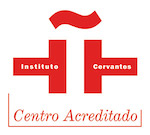Cultural Immersion Program

BCNLIP’s Spanish courses with cultural immersion are designed to offer you a practical, in-depth experience in one of Europe’s most fascinating cities. This format includes short- and long-term programs in an international setting, guided by native professionals and a highly qualified team.
General cultural immersion program
Intensive commitment 20 hours/week — Valid for student visa application
- Schedules: 9:00, 13:00 and 17:00
- Monday to Friday
- General courses
- Immersion program
- Friday tutoring
- Activities
- Duration: from 1 week to 1 year, according to your needs
- Start: the first Monday of each month
- Valid for student visa
- Subject to availability
Partial cultural immersion program
Intensive commitment 8 hours/week
- Schedules: 11:30, 15:30 and 17:30
- 8 hours per week, Monday to Thursday
- Immersion program
- Friday tutoring (additional)
- Activities (additional)
- Duration: from 1 week to 1 year, according to your needs
- Start: the first Monday of each month
- Subject to availability
Levels
Common European Framework of Reference
- A1
- A2
- B1
- B2
- C1
- C2
Not sure of your level? Take our free placement test!
Our methodology
Barcelona Immersion
Learn Spanish by living the city. A practical, flexible program that turns Barcelona into your classroom: you explore neighborhoods, talk to real people, compare sources, and turn your experiences into meaningful projects.

What we do
We integrate language + culture + projects. Each week you work on a topic with our own dossiers (life in Barcelona, the history of Spain and the city, neighborhoods, community rules, laws, news, podcasts…). What you see in class goes out into the streets and returns as a guide, review, chronicle, or report. Ongoing assessment and a learning journal to track your progress.
How we do it
- Communicative action: real and simulated tasks with clear goals.
- Experiential learning: fieldwork, interviews, observation.
- Projects and mediation: explain, compare, and connect perspectives.
- Guidance: tutorials and feedback to refine your voice and your texts.
Stages by level
- Stage 1. Arrival: Living in Barcelona — Learn to introduce yourself, ask for simple information, find your way around, shop, and use public transport. Build confidence to manage basic everyday situations.
- Stage 2. First steps: Living in Spain — Move toward autonomy: make appointments, carry out simple procedures, and understand rules and services. Write short messages and emails in the right format.
- Stage 3. Deep exploration: Spain and Barcelona in depth — Understand and explain key aspects of history and culture. Summarize essential information and express opinions clearly.
- Stage 4. Discovery: Barcelona in depth — Investigate neighborhoods, compare options, and organize plans. Produce guides and reviews that help with decision-making.
- Stage 5. Storytelling: Chronicles of Barcelona and conversations with the city — Create chronicles and reports about the city, integrating multiple sources. Moderate complex conversations and act as a mediator between different perspectives.
Program for each stage
Assessment, guidance, and certification
Assessment
Ongoing, formative, competency-based assessment (aligned with PCIC/CEFR). Before starting, those who already have knowledge take a diagnostic placement test to determine the CEFR level and the right group and to identify strengths and needs; it’s mandatory and does not count as class hours.
During the course we evaluate participation, immersion tasks, and collaborative work with regular feedback; it ends with the final project/presentation and the Learning Journal. (If the student starts from A0, a short orientation is held to set goals and a support plan.)
Tutorials
Weekly group sessions (Fridays) to adjust goals, strategies, and track the journal. One individual tutorial only at the end of the level, with personalized recommendations and a continuity plan.
Grade distribution
- Immersion program — Dossier and immersion tasks 50% · Final project 40% · Journal + participation 10%.
- Comprehensive program (general course + immersion) — General course 45% · Immersion 45% · Cultural activities 10%.
Certification
Issuance of an internal achievement certificate (requirements: ≥80% attendance and level objectives met), with a breakdown by competencies and total hours.
If you need official accreditation, we offer guidance and preparation for DELE and SIELE (mock exams, advising, and registration) so you can certify your level with international validity.
Program
Want all the details? Download the program: levels, objectives, content, methodology, sessions, resources and materials, assessment criteria and certificate, and schedules.
Complementary activities
In addition to classes and immersion, each week we add activities that take Spanish into real life: themed neighborhood routes, visits to cultural centers, creative workshops, conversation clubs, film forums, and meet-ups with local agents.
They strengthen mediation, confidence, and your integration in the city while building your portfolio (guides, chronicles, podcasts).
Hit play and discover what the program feels like. More information at this link.













